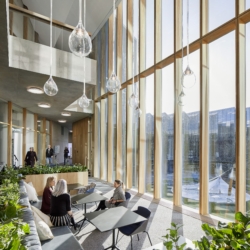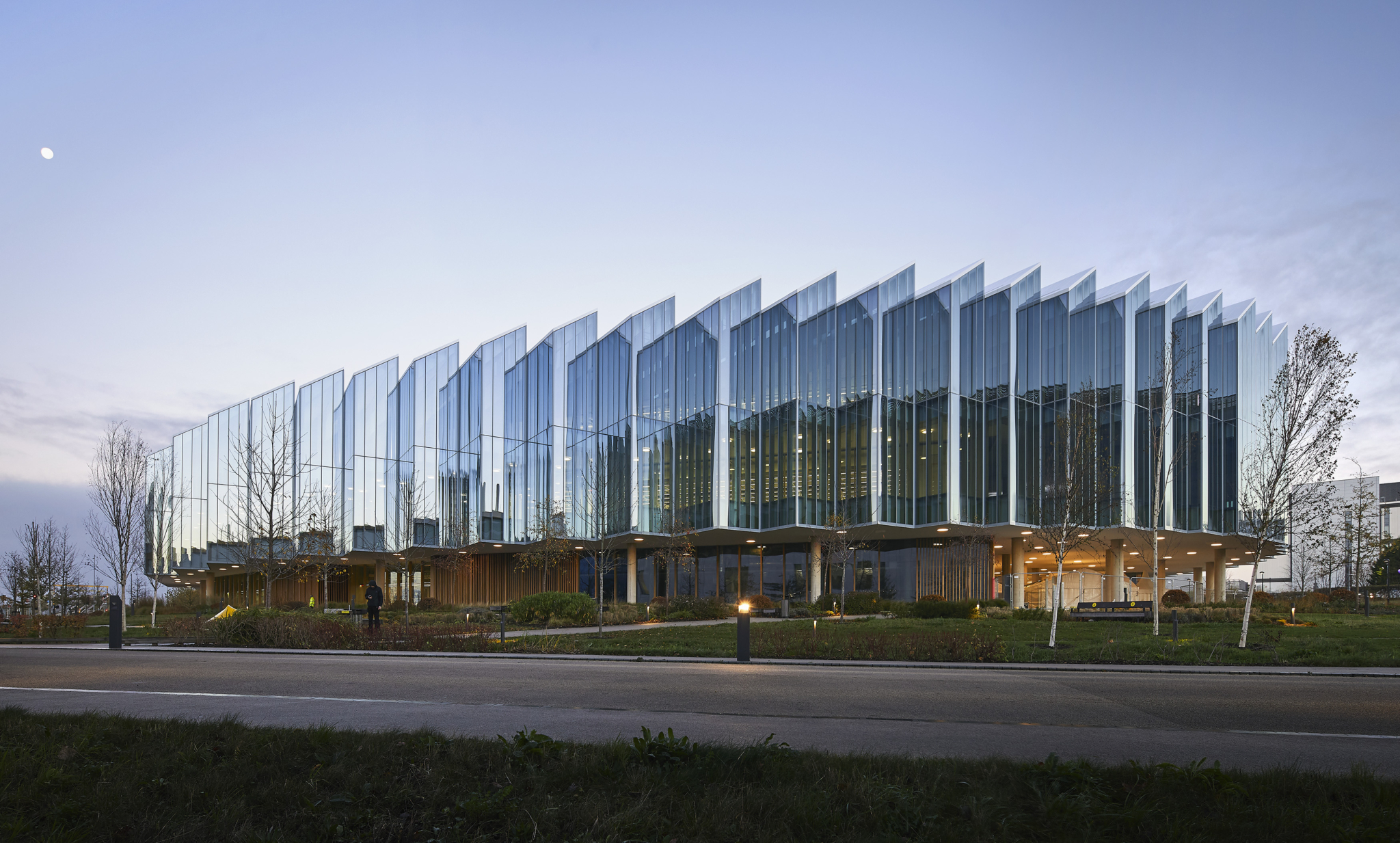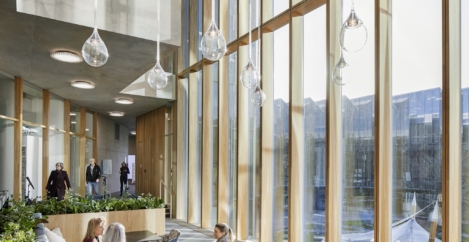January 29, 2024
Lab rats – how the UK life sciences sector is struggling to find space to work
 In November 2023, plans to turn part of a golf course next to a motorway into a £340 million science park were refused by South Oxfordshire District Council. Although now classified as greenbelt, the location was the site of a landfill as recently as the 1990s and is just a stone’s throw from both the A40 trunk road and M40 motorway. The developers are expected to appeal. Whatever the details of this story, it is an example of how challenging it can be to meet demand for lab and life sciences space in the so-called Golden Triangle of London, Oxford and Cambridge in the South of England. This lack of supply is acting as a brake on the UK Government’s dream of making the country a “science superpower”.
In November 2023, plans to turn part of a golf course next to a motorway into a £340 million science park were refused by South Oxfordshire District Council. Although now classified as greenbelt, the location was the site of a landfill as recently as the 1990s and is just a stone’s throw from both the A40 trunk road and M40 motorway. The developers are expected to appeal. Whatever the details of this story, it is an example of how challenging it can be to meet demand for lab and life sciences space in the so-called Golden Triangle of London, Oxford and Cambridge in the South of England. This lack of supply is acting as a brake on the UK Government’s dream of making the country a “science superpower”.
According to a report earlier this year from property analyst Bidwells, there is pretty much no space left in Oxford or Cambridge for life science businesses to move into. It estimated there is just 10,000 sq ft of space available in Cambridge, compared with two million sq ft of demand. In Oxford, there is about 25,000 sq ft available compared with demand for 845,000 sq ft.
This impasse caused Dame Emma Walmsley, chief executive of GSK, to warn this year that the UK risked missing out on the opportunity to become an even bigger player in the economically significant life sciences sector.
[perfectpullquote align=”right” bordertop=”false” cite=”” link=”” color=”” class=”” size=””]It is striking how weighted Ireland’s export figures are to the life sciences, medical and pharmaceutical industries craved by the UK[/perfectpullquote]
Just how significant is apparent when comparing the UK with Ireland. Ireland’s adjusted per capita GDP figure known as Gross National Income is around 16 percent higher than the UK’s and higher than that of both Germany and France. (The GNI measure was introduced by the Irish Government to adjust for the inflated GDP figure caused by Ireland’s position as a tax haven for mainly US corporations.)
What is striking is how weighted the country’s export figures are to the life sciences, medical and pharmaceutical industries craved by the UK. According to the Observatory of Economic Complexity, in 2021, Ireland exported a total of $212B, making it the 30th largest exporter in the world.
This figure includes vaccines, blood, antisera, toxins and cultures ($36.5B), packaged medicaments ($32.8B), nitrogen heterocyclic compounds used in over half of all FDA approved drugs ($22.4B), integrated circuits ($15.3B), and scented mixtures ($9.37B).
To illustrate the pull of Ireland for these sectors, AstraZeneca announced in 2021 it had chosen the Republic of Ireland for a $360 million manufacturing facility rather than Britain because of a “discouraging” tax system.
“We are at something of a tipping point if we don’t make the right decisions now,” said Emma Walmsley. “We really do have to start to close the execution gap and align the strategy and the opportunity to the delivery.”
The case for optimism
Her words are echoed by other giants in the sector. Dean Li, president of Merck’s research laboratories, praised the UK’s scientific talent and expertise this year following the start of work on a new £1 billion research centre in King’s Cross, with links to local Universities and the Francis Crick Institute. But he also warned that conditions could be much better.
“We’re still very bullish on the discovery side, but there becomes a cap as to how far you advance your investment based on the broader ecosystem,” he claimed in an interview. “We hope that the UK Government and the UK people and the UK ecosystem make the appropriate investments such that MSD sits there and say: Yes, we were right to build it.”
[perfectpullquote align=”right” bordertop=”false” cite=”” link=”” color=”” class=”” size=””]The UK announced it had rejoined the Horizon Europe programme in September[/perfectpullquote]
In May of this year, the Government announced a £650 billion package of support for the sector. The so-called ‘Life Sci for Growth’ includes ten policies such as £121 million to improve commercial clinical trials to bring new medicines to patients faster, up to £48 million of new money for scientific innovation to prepare for any future health emergencies, £154 million to increase the capacity of the UK’s biological data bank further aiding scientific discoveries that help human health, and up to £250 million to incentivise pension schemes to invest in promising science and tech firms.
It also laid out changes to planning rules to free-up lab space and create a route for the East West Rail line, to improve connections between Oxford and Cambridge. Typically, this plan is now subject to an NAO audit to assess its business case.
Encouragingly, the UK also announced it had rejoined the Horizon Europe programme in September, following years of concern about the impact of the country’s withdrawal from the scheme after the Brexit vote in 2016.
Horizon Europe is the largest international research collaboration scheme in the world. As well as EU members, Norway, Israel and New Zealand are members, with South Korea, Japan and Canada also in talks to join. The joint budget runs to nearly €100bn. Beth Thompson of the Wellcome Foundation described the move as great news for both researchers and the general population. “Collaboration is great for the vitality of science in the UK and elsewhere,” she said. “It’s great for new discoveries and innovation and the economy. But it’s also great for health and helping to solve the urgent health challenges the world faces.”
A problem of supply and demand
 So, in theory, all of the pieces are in place. The UK has a very healthy life sciences sector, worth around £94 billion a year and employing 300,000 people, focussed inevitably on Oxford and Cambridge. It is estimated that two-thirds of all life sciences startups in Europe are formed in the UK.
So, in theory, all of the pieces are in place. The UK has a very healthy life sciences sector, worth around £94 billion a year and employing 300,000 people, focussed inevitably on Oxford and Cambridge. It is estimated that two-thirds of all life sciences startups in Europe are formed in the UK.
Yet in both cities developers say the planning system, lack of council resources and local opposition to developments make it impossible to put up new facilities to cope with surging demand. In both cities, developers are repurposing defunct retail and office facilities in an effort to keep up with demand.
Even so, Cushman & Wakefield expects the mismatch between supply and demand to persist until at least 2025 when 4 million sq ft of lab buildings are due to be completed.
The supply squeeze has pushed up lab rents to record highs. Before the pandemic, a decent laboratory in Cambridge would rent out for about £42 per sq ft, but this is set to exceed £60 per sq ft this year. Similarly, rents for purpose-built labs in Oxford rose 25 per cent in 2022 to £75 per sq ft, a new record.
The supply to meet growing demand is already developing in other parts of the UK. Canary Wharf is already trying to reinvent itself as a life sciences hub, as it sees a number of anchor clients in the financial and legal services sector quit for smaller – but not necessarily cheaper – offices elsewhere in London.
The Qatar Investment Authority and Brookfield, the Canadian investor chaired by Mark Carney, the former Bank of England governor, are investing £400 million in Canary Wharf Group. The organisations, which have owned Canary Wharf Group since 2015, are putting in the same amount of capital, meaning that they will each continue to own 50 per cent of Canary Wharf.
The money will be used to fund the plans of Shobi Khan, the chief executive of Canary Wharf Group, to reposition the area as a life sciences and residential hub.
“This investment underscores confidence in our business plan and the strategic repositioning of Canary Wharf,” Khan said. “We have transformed the estate into a thriving, sustainable mixed-use neighbourhood with award-winning homes, an abundance of amenities and parks, a strong and unique retail offer, and expanding life sciences.”
To attract more life sciences businesses, what the firm refers to as a “WeWork for laboratories” opened this year and a 22-storey commercial lab, the biggest in Europe, will follow in 2026.
The spread of innovation
Other cities are getting in on the act. These include Aberdeen, with plans championed by Sir Ian Wood and his Opportunity North East developer to invest in research and lab facilities in an area best known for its North Sea oil wealth.
[perfectpullquote align=”right” bordertop=”false” cite=”” link=”” color=”” class=”” size=””]We are at something of a tipping point if we don’t make the right decisions now[/perfectpullquote]
The Economist reports that Professor David Blackbourn of the University of Aberdeen says ten companies have been spun out from his institution. “One, TauRx, based in a former bus depot, is trying to develop a treatment for Alzheimer’s and has raised over $800m since its founding in 2002. Its innovation, tested in human trials, targets tau tangles (abnormal clumps of protein that stick to neurons in the brain). Regulators will soon determine if that treatment is sufficiently effective.”
One other point that might encourage life sciences forms to move outside The Golden Triangle is the availability of housing. Planning constraints are also evident in the housing markets in the three cities that form the triangle and they are frequently coupled with off-putting high rents and house prices. If the UK is serious about its plans to become a global superpower in the field it may need to think about how to better develop the sector outside of the South of England.
All images: Astra Zeneca’s Cambridge Discovery Centre designed by Hufton+Crow
This article appears in Issue 18 of IN Magazine




















